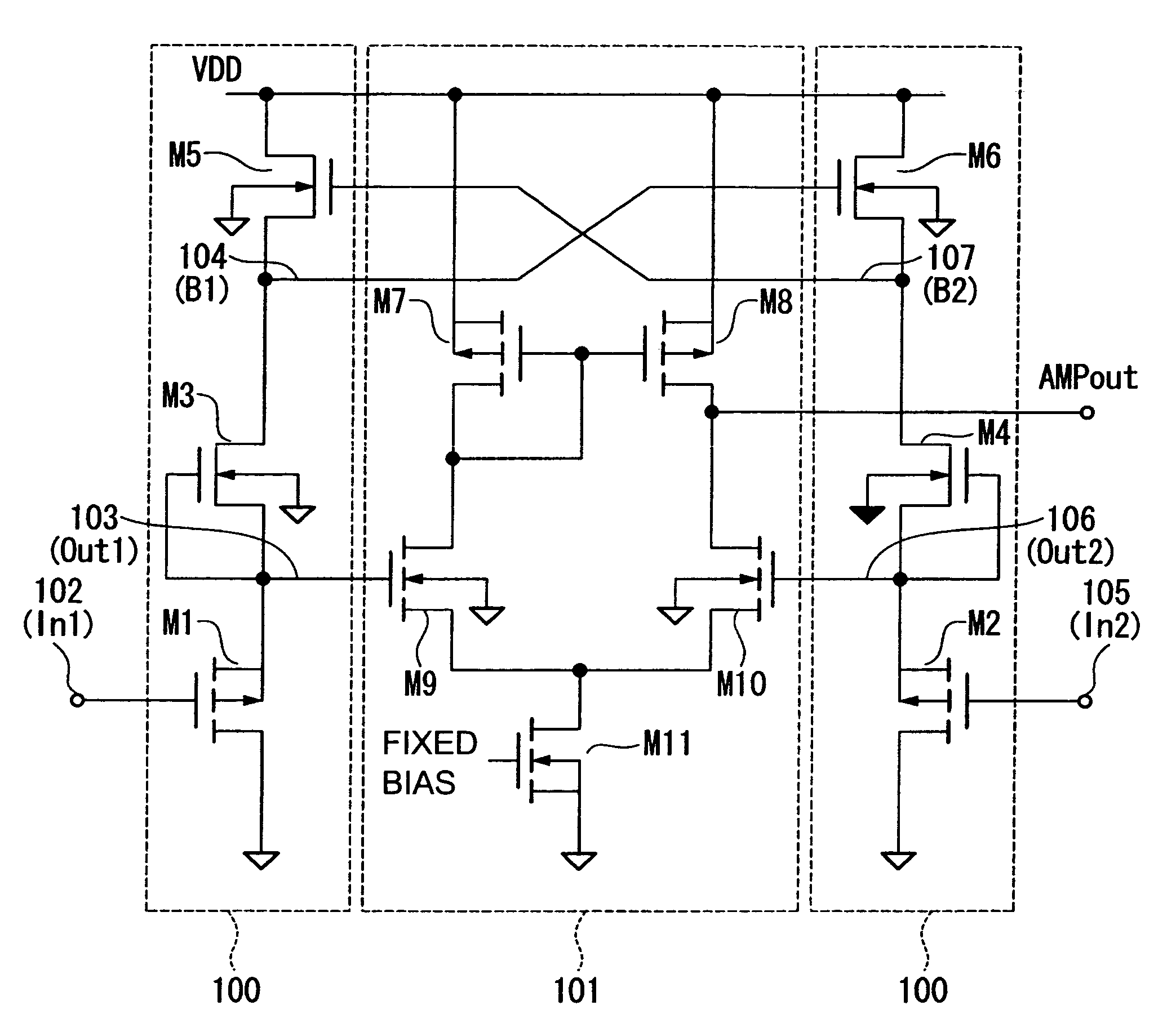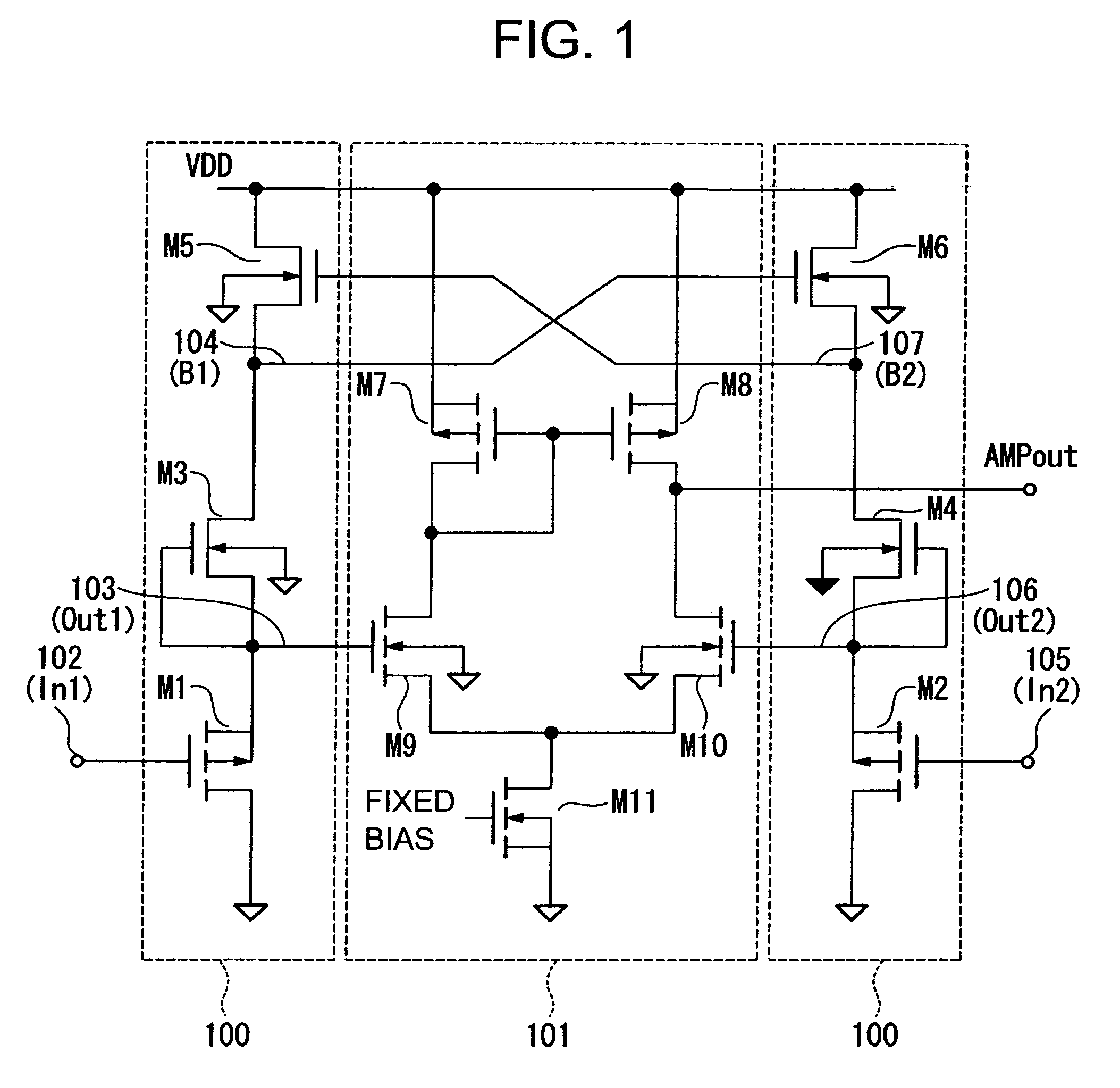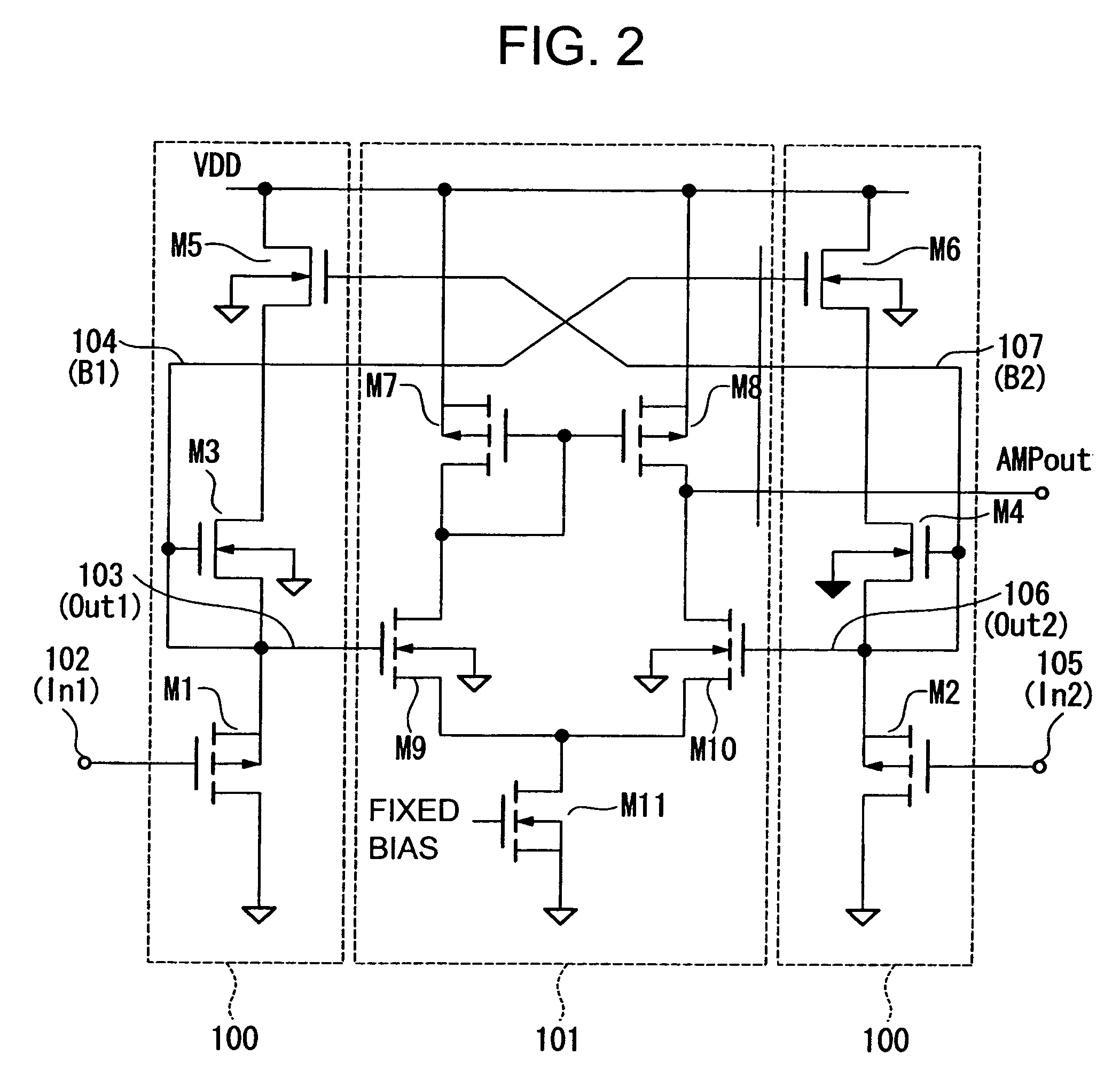Voltage level shift circuit and semiconductor integrated circuit
a voltage level shift circuit and integrated circuit technology, applied in pulse generators, pulse techniques, instruments, etc., can solve the problems of difficult to maintain the same difference between the input potential and output potential of the respective voltage level shift circuit, and deteriorating power supply rejection ratio at a low frequency (1 khz), so as to improve the power supply rejection ratio
- Summary
- Abstract
- Description
- Claims
- Application Information
AI Technical Summary
Benefits of technology
Problems solved by technology
Method used
Image
Examples
first embodiment
[0047]FIG. 1 illustrates a voltage level shift circuit according to a first embodiment of the present invention. In FIG. 1, portions surrounded by broken lines 100 operate as voltage level shift circuits, while a portion surrounded by a broken line 101 operates as a differential amplifier circuit. Further, the circuits illustrated in FIG. 1 are formed on a P-type substrate.
[0048]A transistor M1 is a P-channel enhancement type MOS transistor, and a first signal input terminal (In1) 102 is connected to its gate. A transistor M3 is an N-channel depletion type MOS transistor, and operates as a constant current source because its gate and its source are connected to each other. In this way, the circuit formed of the transistor M1 and the transistor M3 operates as a source follower circuit with the transistor M3 (constant current source) being a load, and the circuit functions to shift a direct current component of the input voltage of the first signal input terminal (In1) 102 to a positi...
second embodiment
[0064]FIG. 2 illustrates a voltage level shift circuit according to a second embodiment of the present invention.
[0065]In the circuit illustrated in FIG. 2, portions surrounded by broken lines 100 operate as voltage level shift circuits, while a portion surrounded by a broken line 101 operates as a differential amplifier circuit. Further, the circuits illustrated in FIG. 2 are formed on a P-type substrate.
[0066]A P-channel enhancement type MOS transistor M1 operates as a source follower circuit with a constant current source formed of an N-channel depletion type MOS transistor M3 being a load, and functions to shift a direct current component of the input voltage to a positive power supply voltage side and to output the shifted direct current component.
[0067]Therefore, the source follower circuit formed of the transistor M1 and the transistor M3 operates as a first voltage level shift circuit for shifting the direct current component of a signal inputted from the signal input termin...
third embodiment
[0076]FIG. 5 illustrates a voltage level shift circuit according to a third embodiment of the present invention.
[0077]In the voltage level shift circuit illustrated in FIG. 5, a P-channel enhancement type MOS transistor M21 and a P-channel enhancement type MOS transistor M22 form a first voltage level shift circuit (source follower circuit), while a P-channel enhancement type MOS transistor M23 and a P-channel enhancement type MOS transistor M24 form a second voltage level shift circuit (source follower circuit).
[0078]A constant current source 20, a P-channel enhancement type MOS transistor M25, the P-channel enhancement type MOS transistor M22, and the P-channel enhancement type MOS transistor M24 form a current mirror circuit. With this structure, when the constant current source 20 is used to feed constant current (reference current Iref) through the P-channel enhancement type MOS transistor M25, due to the current mirror effect, current I which is the same as the reference curre...
PUM
 Login to View More
Login to View More Abstract
Description
Claims
Application Information
 Login to View More
Login to View More - R&D
- Intellectual Property
- Life Sciences
- Materials
- Tech Scout
- Unparalleled Data Quality
- Higher Quality Content
- 60% Fewer Hallucinations
Browse by: Latest US Patents, China's latest patents, Technical Efficacy Thesaurus, Application Domain, Technology Topic, Popular Technical Reports.
© 2025 PatSnap. All rights reserved.Legal|Privacy policy|Modern Slavery Act Transparency Statement|Sitemap|About US| Contact US: help@patsnap.com



